![统计和计算逆问题 [Statistical and Computational Inverse Problems]](https://pic.windowsfront.com/11647753/54e1b517N72741d9a.jpg)

具体描述
内容简介
This book is aimed at postgraduate students in applied mathematics as well as at engineering and physics students with a firm background in mathematics. The first four chapters can be used as the material for a first course on inverse problems with a focus on computational and statistical aspects. On the other hand, Chapters 3 and 4, which discuss statistical and nonstationary inversion methods, can be used by students already having knowldege of classical inversion methods.There is rich literature, including numerous textbooks, on the classical aspects of inverse problems. From the numerical point of view, these books concentrate on problems in which the measurement errors are either very small or in,which the error properties are known exactly. In real world problems, however, the errors are seldom very small and their properties in the deterministic sense are not well known. For example, in classical literature the error norm is usually assumed to be a known real number. In reality, the error norm is a random variable whose mean might be known.
内页插图
目录
Preface1 Inverse Problems and Interpretation of Measurements
1.1 Introductory Examples
1.2 Inverse Crimes
2 Classical Regularization Methods
2.1 Introduction: Fredholm Equation
2.2 Truncated Singular Value Decomposition
2.3 Tikhonov Regularization
2.3.1 Generalizations of the Tikhonov Regularization
2.4 Regularization by Truncated Iterative Methods
2.4.1 Landweber-Fridman Iteration
2.4.2 Kaczmarz Iteration and ART
2.4.3 Krylov Subspace Methods
2.5 Notes and Comments
3 Statistical Inversion Theory
3.1 Inverse Problems and Bayes' Formula
3.1.1 Estimators
3.2 Construction of the Likelihood Function
3.2.1 Additive Noise
3.2.2 Other Explicit Noise Models
3.2.3 Counting Process Data
3.3 Prior Models
3.3.1 Gaussian Priors
3.3.2 Impulse Prior Densities
3.3.3 Discontinuities
3.3.4 Markov Random Fields
3.3.5 Sample-based Densities
3.4 Gaussian Densities
3.4.1 Gaussian Smoothness Priors
3.5 Interpreting the Posterior Distribution
3.6 Markov Chain Monte Carlo Methods
3.6.1 The Basic Idea
3.6.2 Metropolis-Hastings Construction of the Kernel
3.6.3 Gibbs Sampler
3.6.4 Convergence
3.7 Hierarcical Models
3.8 Notes and Comments
4 Nonstationary Inverse Problems
4.1 Bayesian Filtering
4.1.1 A Nonstationary Inverse Problem
4.1.2 Evolution and Observation Models
4.2 Kalman Filters
4.2.1 Linear Gaussian Problems
4.2.2 Extended Kalman Filters
4.3 Particle Filters
4.4 Spatial Priors
4.5 Fixed-lag and Fixed-interval Smoothing
4.6 Higher-order Markov Models
4.7 Notes and Comments
5 Classical Methods Revisited
5.1 Estimation Theory
5.1.1 Maximum Likelihood Estimation
5.1.2 Estimators Induced by Bayes Costs
5.1.3 Estimation Error with Affine Estimators
5.2 Test Cases
5.2.1 Prior Distributions
5.2.2 Observation Operators
5.2.3 The Additive Noise Models
5.2.4 Test Problems
5.3 Sample-Based Error Analysis
5.4 Truncated Singular Value Decomposition
5.5 Conjugate Gradient.Iteration
5.6 Tikhonov Regularization
5.6.1 Prior Structure and Regularization Level
5.6.2 Misspeeification of the Gaussian Observation Error Model
5.6.3 Additive Cauchy Errors
5.7 Diseretization and Prior Models
5.8 Statistical Model Reduction, Approximation Errors and Inverse Crimes
5.8.1 An Example: Full Angle Tomography and CGNE
5.9 Notes and Comments
6 Model Problems
6.1 X-ray Tomography
6.1.1 Radon Transform
6.1.2 Discrete Model
6.2 Inverse Source Problems
6.2.1 Quasi-static Maxwell's Equations
6.2.2 Electric Inverse Source Problems
6.2.3 Magnetic Inverse Source Problems
6.3 Impedance Tomography
6.4 Optical Tomography
6.4.1 The Radiation Transfer Equation
6.4.2 Diffusion Approximation
6.4.3 Time-harmonic Measurement
6.5 Notes and Comments
7 Case Studies
7.1 Image Deblurring and Recovery of Anomalies
7.1.1 The Model Problem
7.1.2 Reduced and Approximation Error Models
7.1.3 Sampling the Posterior Distribution
7.1.4 Effects of Modelling Errors
7.2 Limited Angle Tomography: Dental X-ray Imaging
7.2.1 The Layer Estimation
7.2.2 MAP Estimates
7.2.3 Sampling: Gibbs Sampler
7.3 Biomagnetic Inverse Problem: Source Localization
7.3.1 Reconstruction with Gaussian White Noise Prior Model
7.3.2 Reconstruction of Dipole Strengths with the e1-prior Model
7.4 Dynamic MEG by Bayes Filtering
7.4.1 A Single Dipole Model
7.4.2 More Realistic Geometry
7.4.3 Multiple Dipole Models
7.5 Electrical Impedance Tomography: Optimal Current Patterns
7.5.1 A Posteriori Synthesized Current Patterns
7.5.2 Optimization Criterion
7.5.3 Numerical Examples
7.6 Electrical Impedance Tomography: Handling Approximation Errors
7.6.1 Meshes and Projectors
7.6.2 The Prior Distribution and the Prior Model
7.6.3 The Enhanced Error Model
7.6.4 The MAP Estimates
7.7 Electrical Impedance Process Tomography
7.7.1 The Evolution Model
7.7.2 The Observation Model and the Computational Scheme
7.7.3 The Fixed-lag State Estimate
7.7.4 Estimation of the Flow Profile
7.8 Optical Tomography in Anisotropic Media
7.8.1 The Anisotropy Model
7.8.2 Linearized Model
7.9 Optical Tomography: Boundary Recovery
7.9.1 The General Elliptic Case
7.9.2 Application to Optical Diffusion Tomography
7.10 Notes and Comments
A Appendix: Linear Algebra and Functional Analysis
A.1 Linear Algebra
A.2 Functional Analysis
A.3 Sobolev Spaces
B Appendix 2: Basics on Probability
B.1 Basic Concepts
B.2 Conditional Probabilities
References
Index
前言/序言
用户评价
我一直是某个领域的研究人员,长期以来,在处理诸如图像去噪、缺失数据填补等问题时,总是受限于现有的方法。当我看到《统计和计算逆问题》这本书时,我满怀期待地认为它会为我打开一扇新世界的大门。这本书的封面设计简洁而专业,让我对它寄予了厚望。我尤其关注其中关于“统计”和“计算”如何协同工作的阐释。我期望书中能够深入探讨如何利用统计学的原理来度量和分析逆问题的模型误差和数据噪声,以及如何基于这些统计信息来设计鲁棒的计算算法。例如,我希望它能够详细介绍贝叶斯方法在逆问题中的应用,包括如何构建先验模型,以及如何进行后验推断,这对于量化模型的不确定性至关重要。此外,对于计算方法的介绍,我期待能看到关于迭代算法、非线性优化技术、以及大规模数据处理方法等方面的深入讲解,特别是它们在处理高维、病态逆问题时的效率和稳定性。遗憾的是,在阅读过程中,我发现书中对于这些方面的具体实现细节和优化技巧的讨论相对较少,更多的是停留在理论层面。虽然理论的严谨性无可挑剔,但对于迫切需要解决实际工程问题的我来说,如何将这些理论转化为高效的代码,以及如何处理真实世界中各种复杂的干扰因素,这些更具操作性的内容才是我的“刚需”。
评分最近在阅读一本关于《统计和计算逆问题》的书,我原本以为它会像一本“葵花宝典”,能直接告诉我如何从海量模糊的数据中提取出有价值的信息。我期待书中能够深入剖析逆问题之所以“病态”的根源,例如,它是否总是与数学上的欠定性或病态矩阵有关?我希望它能清晰地解释,在什么情况下,我们可以依赖统计的方法来“稳定”求解,例如,是否与数据中的噪声水平、模型精度有关?我期待书中能够生动地展示,如何将各种统计分布(如高斯分布、泊松分布等)融入到逆问题的模型中,以及如何利用概率图模型来处理复杂的依赖关系。同时,我也希望能看到关于现代计算技术如何克服逆问题的挑战,比如,如何利用马尔可夫链蒙特卡洛(MCMC)方法进行高效的后验推断,或者如何利用深度学习的强大表示能力来学习逆问题的映射关系。我甚至想象着书里会有专门的章节,用来讲解如何设计有效的实验来收集数据,以及如何通过交叉验证等方式来评估模型的泛化能力。然而,读下来之后,我发现这本书更像是一本理论的“圣经”,虽然其深度和广度令人钦佩,但其抽象的数学语言和缺乏直接的工程指导,让我感觉它更适合作为理论研究的参考,而不是一本能够直接指导实践的“操作手册”。
评分作为一个对数据科学充满好奇的学生,我一直对那些能够从不完整或模糊的数据中恢复真实信息的方法非常着迷。《统计和计算逆问题》这本书,从书名上看,就直接击中了我的兴趣点。我曾经想象过,它会用生动形象的比喻来解释逆问题的概念,比如“盲人摸象”或者“ X光成像”,并逐步引导我理解什么是“病态”问题,为什么它如此难以解决。我期待书中能够详细介绍各种经典的逆问题求解框架,如最小二乘法、最大似然估计、最大后验估计等,并解释它们各自的适用场景和局限性。同时,我也希望书中能够深入探讨不同类型的正则化技术,例如L1、L2正则化、Tikhonov正则化等,并给出它们在具体应用中的实际效果对比,例如在防止过拟合、提高解的稳定性方面的作用。更重要的是,我渴望书中能有大量的图示和直观的解释,帮助我理解抽象的数学公式背后的物理意义或者统计含义,例如,我特别想知道,为什么引入“先验信息”能够帮助我们更好地解决逆问题,以及如何选择合适的先验。然而,现实是,这本书的风格更偏向于严谨的数学推导和理论论证,虽然内容很深刻,但对于一个刚刚接触这个领域的学生来说,理解起来确实需要花费相当大的力气,有时候会觉得有些“啃不动”。
评分我的工作涉及大量的信号处理和系统辨识任务,这其中充斥着各种各样的逆问题,比如从测量数据反推信号源或者系统参数。因此,《统计和计算逆问题》这本书对我来说,本应是解决实际难题的“救命稻草”。我满怀期待地翻开这本书,希望它能像一位经验丰富的老工匠,详细地展示如何一步步地搭建模型,如何选择合适的统计工具来量化不确定性,以及如何运用高效的计算方法来找到最优解。我尤其关注关于“计算”的部分,例如,我希望能深入了解如何利用迭代算法来求解大型线性系统,如何处理非线性逆问题中的局部最优解问题,以及如何评估计算结果的收敛性和精度。我期望书中能有关于数值稳定性、算法复杂度和并行计算等方面的讨论,这些对于处理实时性要求高或者数据量巨大的工程问题至关重要。此外,我也希望它能提供一些关于如何选择合适的数据采集策略,以及如何评估数据质量对逆问题求解的影响。遗憾的是,这本书的内容更多地聚焦于理论框架和方法论的建立,对于具体的算法实现细节和工程优化方面,笔墨相对有限,这让我感觉在实际操作层面,还需要大量的补充和探索,才能真正将书中的知识转化为可用的解决方案。
评分初次拿到这本《统计和计算逆问题》,我本来期望它能像一本实用的工具书,能够直接指导我如何解决实际科研中遇到的各种逆问题。比如,我希望它能清晰地列出不同类型逆问题的常见模型,以及针对这些模型,有哪些成熟的统计方法和计算算法可以应用,并且能有详实的案例分析,展示这些方法在数据处理、信号恢复、医学成像等领域的实际效果。我甚至设想,它应该会包含大量图表和代码示例,方便我快速上手,直接将书中的理论转化为可执行的代码。读完一遍,我发现它并没有直接提供我想要的“即插即用”的解决方案,也没有太多具体的应用案例,这一点让我有些意外。书中的理论部分确实很扎实,但有时候会感觉有些抽象,需要反复咀嚼才能理解其精髓。例如,关于正则化方法的讨论,虽然深入浅出地阐述了各种正则化技术背后的数学原理,但对于初学者来说,如何根据具体的逆问题选择最合适的正则化参数,以及不同正则化方法之间的权衡,书中并没有给出非常明确的指导。我期待能有更多篇幅去探讨不同方法在实际应用中的优劣比较,以及一些通用的调参策略。总的来说,这本书更像是一本理论基础的奠基之作,需要读者自己具备一定的背景知识,并且愿意投入大量时间和精力去消化和吸收其中的内容,才能最终将其转化为解决实际问题的能力。
评分物流超快,头天下单,第二天就送到了,虽然是影印的,但不影响学习,一分钱一分货,几十块钱值了
评分印刷质量不敢恭维。。。
评分不错的东西!值得购买!
评分不说别的,京东的快递就要给赞!
评分正在学习
评分收到了,还没细读,细读后再来详细评价!
评分印刷质量不敢恭维。。。
评分好书啊好书,我非常喜欢
评分這個不錯的!
相关图书
本站所有内容均为互联网搜索引擎提供的公开搜索信息,本站不存储任何数据与内容,任何内容与数据均与本站无关,如有需要请联系相关搜索引擎包括但不限于百度,google,bing,sogou 等
© 2025 book.coffeedeals.club All Rights Reserved. 静流书站 版权所有

![生态智慧:生态可持续性 [Ecological Sustainability] pdf epub mobi 电子书 下载](https://pic.windowsfront.com/11699887/5652a6c1N52bc021a.jpg)
![大气污染控制技术与策略丛书:烟气催化脱硝关键技术研发及应用 [Development and Application of Key Iechnologies for Selective Catalytic Reduction of Nox From Flue Gas] pdf epub mobi 电子书 下载](https://pic.windowsfront.com/11701609/556f9fe3N9d0f4ce1.jpg)

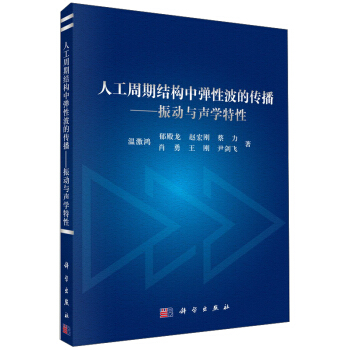

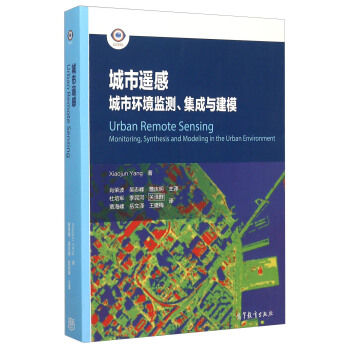
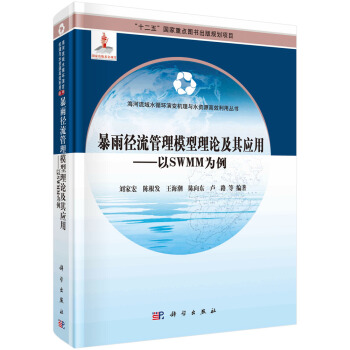
![黎曼的学术遗产:150年巡礼(英文版) [The Legacy of Bernhard Riemann After One Hundred and Fifty Years] pdf epub mobi 电子书 下载](https://pic.windowsfront.com/11848314/5a8e56d3Nfd514c17.jpg)


![数学的本性(珍藏版) [Memorabilia Mathematica] pdf epub mobi 电子书 下载](https://pic.windowsfront.com/11883757/56f8fee3N85d82212.jpg)
![数学与文化(珍藏版) [Mathematics And Culture] pdf epub mobi 电子书 下载](https://pic.windowsfront.com/11884296/56f8fee4Ned6c76f2.jpg)
![无穷的玩艺 数学的探索与旅行(珍藏版) [Playing With Infinity Mathematical Explorations And Excursions] pdf epub mobi 电子书 下载](https://pic.windowsfront.com/11884302/56f8fee4N355b1981.jpg)

![GIS应用与开发丛书:CityEngine城市三维建模 [CityEngine 3D Modeling Tutorial] pdf epub mobi 电子书 下载](https://pic.windowsfront.com/12109136/58a12bd8N538ae034.jpg)

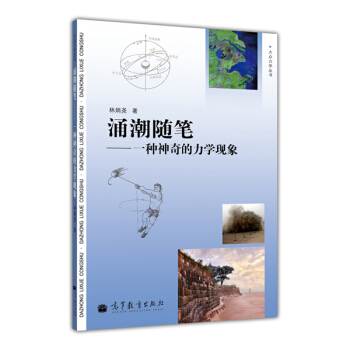
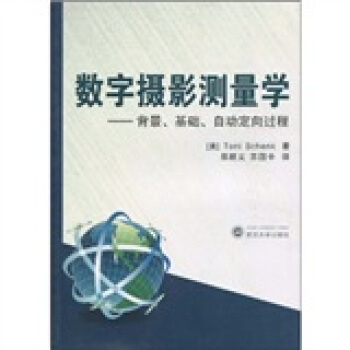
![从分子到网络:细胞和分子神经科学导论(原著第2版 导读版) [From?Molecules?to?Network?An?Introduction?to?Cellular?and?Molecular?Neuroscience] pdf epub mobi 电子书 下载](https://pic.windowsfront.com/10123457/0f8d95ad-ad1a-4a5e-a7c2-5e0110ce89d8.jpg)
